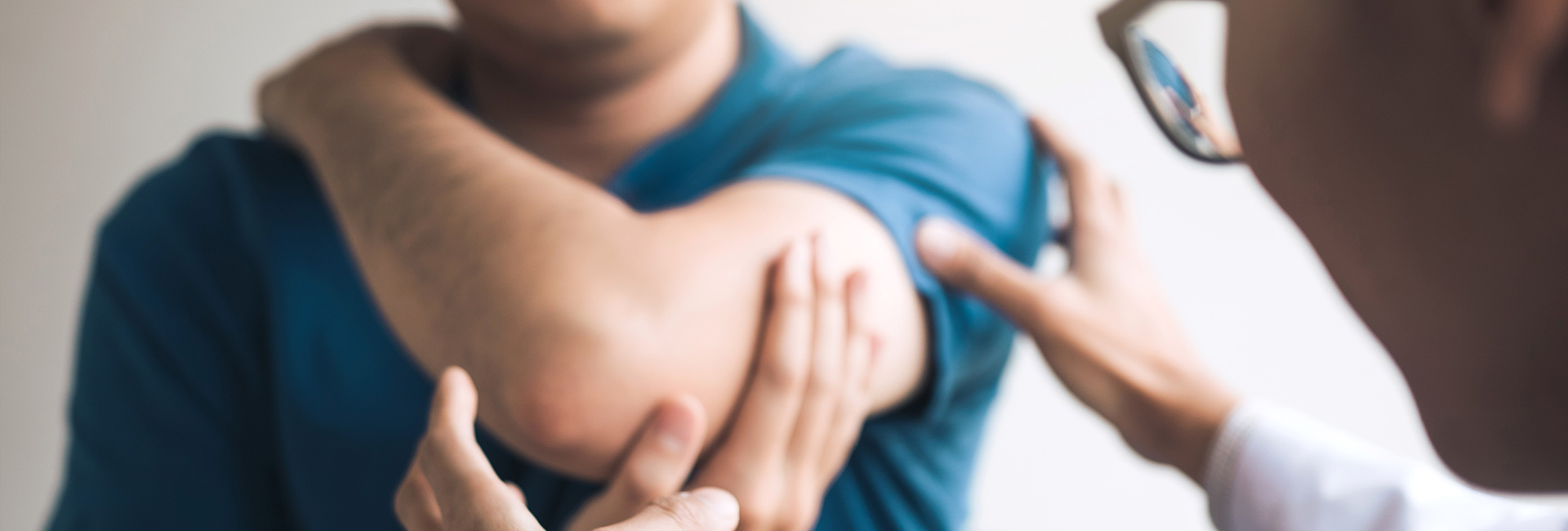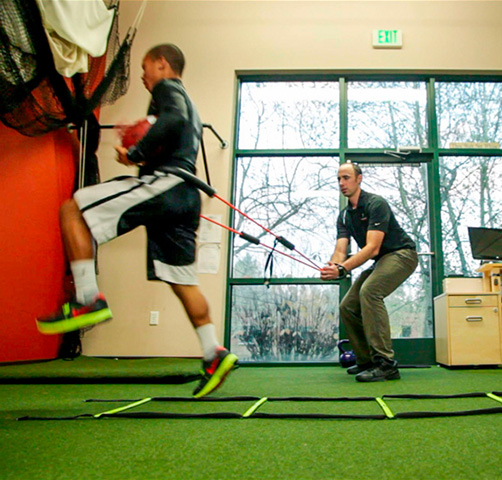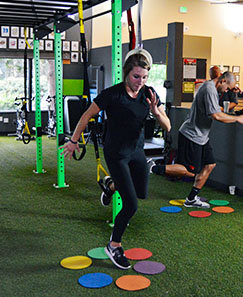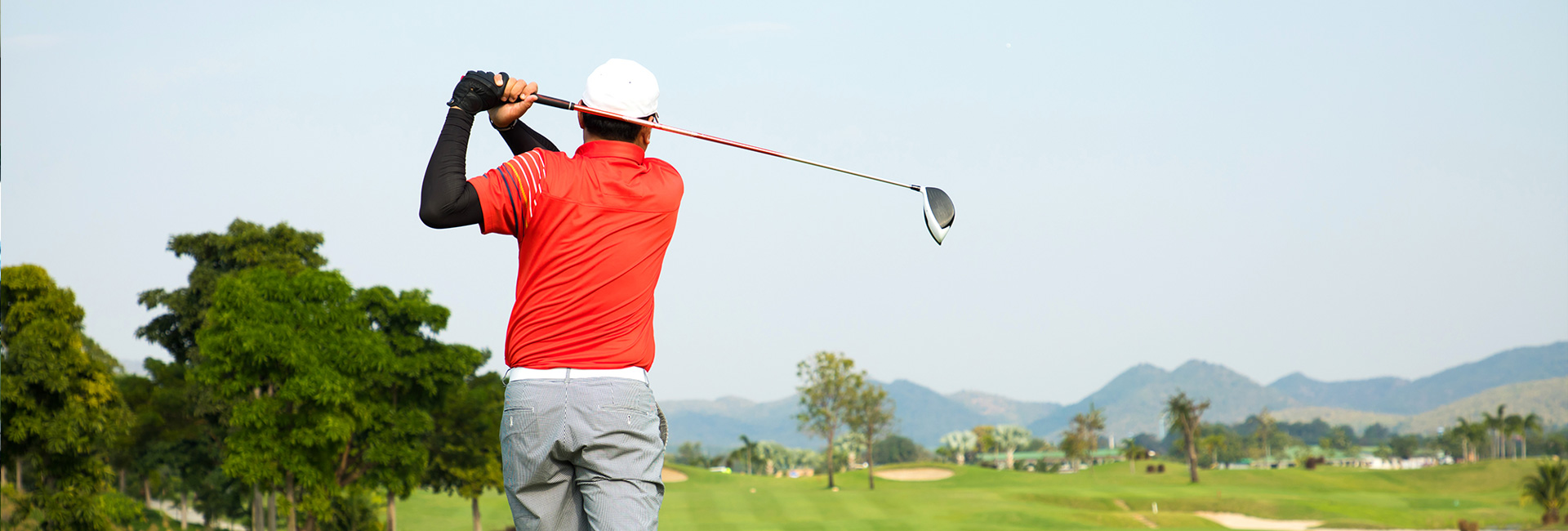What Is Tennis Elbow?
“Tennis elbow” is more common among golfers than “golfer’s elbow”. Why is that? It has a lot to do with the lower body but we’ll get to that later. First let’s find out what it is, how to figure out if you have it, why it can occur and then what to do about it.
Tennis elbow or lateral epicondylitis as it is commonly known in the medical field is an overuse syndrome caused by repetitive strain to the forearm muscles that bend your wrist backward or “cup” your wrist. All of these muscles that cup your wrist and straighten your fingers attach to the lateral elbow via what is termed the common extensor tendon. With repetitive use, like swinging a golf club hundreds of times, you can get a “micro-tearing” of the tendon where it attaches to the bone on the outside of the elbow. The bony prominence is called the lateral epicondyle. This micro-tearing causes an inflammatory process (-itis) which is painful and can impede your time playing your passion. If you’ve experienced this process before you can attest to the pain associated with even light pressure or even a mild bump on a counter top to the outside of your elbow. Once the inflammation starts you want to try and get rid of it ASAP. However, most golfers will ignore the symptoms and continue to play thinking “it will go away on its own, just give it some time”. Yes it needs time but it also needs some rest and anti-inflammatory measures including ice and possibly some ibuprofen. When it has been going on for 3 or more months you have gotten yourself into a situation where the tendon is no longer acutely inflamed but has turned into more degenerative scar tissue. The crummy scar tissue that the body has replaced healthy tissue with is now the problem and anti-inflammatory measures do not consistently work. Indeed this is the source of your pain but may not be the cause of the problem.
The vast majority of amateur golfers get tennis elbow in their lead arm. That is the left elbow on a right handed golfer and right elbow on the left handed golfer. If your lead wrist is cupped at impact you have released the club too early and a chicken wing is in the very near future of your follow through. This places tremendous stress on these muscles and the associated tendon which attaches to the outside of your elbow. You can figure out if you may have tennis elbow by pressing on the bony prominence on the outside of your elbow. If there is pain, that is a sign but not the only sign that there is a problem with the extensor mechanism. Try these other quick tests to confirm it. Straighten your affected elbow out in front of you spreading your fingers wide, with your other hand press down on the extended middle finger while you try to resist it. The last test is to resist bending your affected wrist backwards while continuing to keep your elbow straight. If these last 2 tests give you lateral elbow pain then there is a great chance that you have some form of tennis elbow. It would be best to have it looked at and differentiated from other referred pain issues by a physical therapist or orthopedic physician.

Again, tennis elbow is a repetitive stress issue and again usually is a result of a cupped left wrist at impact. The bigger question is why is the left wrist cupped at impact? Is it that you are unaware of the proper impact position? Is it that your lower body rotation is limited and the arms have been “forced” to become too active? Is it that there is a lack of coordination in initiating the downswing with the lower body causing the upper body and arms to “fire first” which results in coming over the top putting you out of proper position toward impact? Or is it that your grip pressure is too heavy or your grips are too small or you just lack proper forearm strength? Obviously, there is more than 1 reason why someone might develop tennis elbow from golf. You might not have a clue as to what caused it but you want it taken care of now that you have it. I would say, you really should find out what caused it by having your swing and your body analyzed so that it does not become a recurrent problem. And I would also say that you should see someone to help get over the problem and get you back to playing pain-free golf again.
Conservatively as was mentioned earlier you should initially take a bit of rest and use anti-inflammatory measures to calm it down (within the first 1-2 weeks of noticing it). But if it persists you should consult with a physical therapist and/or an orthopedist. Now the orthopedist might inject you with a steroid such as cortisone and hopefully refer you to physical therapy. The physical therapist is going to assess you and will most likely provide manual therapy (massage and joint mobilization), apply modalities (heat, cold, ultrasound, etc.) as well as give you exercises that will help normalize soft tissue length and strength so that healing occurs optimally. If you only get an injection and do not have your body movement screened you are essentially only providing a temporary band-aid to the symptom without addressing the cause of how it came about. As it heals it is essential to have guidance on how much load you should apply for ideal healing. Having a skilled PT familiar with the biomechanics of the golf swing and with knowledge on how to assess the entire body as it relates to the movements needed to efficiently swing a golf club check you out, should be a top priority.
If you do not have tennis elbow symptoms nor do you wish to contract them, there are upper extremity exercises to help prevent it. These can lengthen and strengthen important structures associated with the condition but if you are serious you also ought to make sure the chicken wing does not come flying in after your impact position. Get with a qualified PGA teaching professional to learn proper swing mechanics. If your body has a hard time doing what they tell you to do then get with a properly trained PT to help prepare your body for proper swing mechanics. Good luck golfers avoiding tennis elbow!
Experts in Sports Injury Recovery
We are committed to providing effective, efficient, and compassionate care to help you return to pain-free sport. Our passion is to help every patient reach their goals on their journey to recovery and optimal performance.



